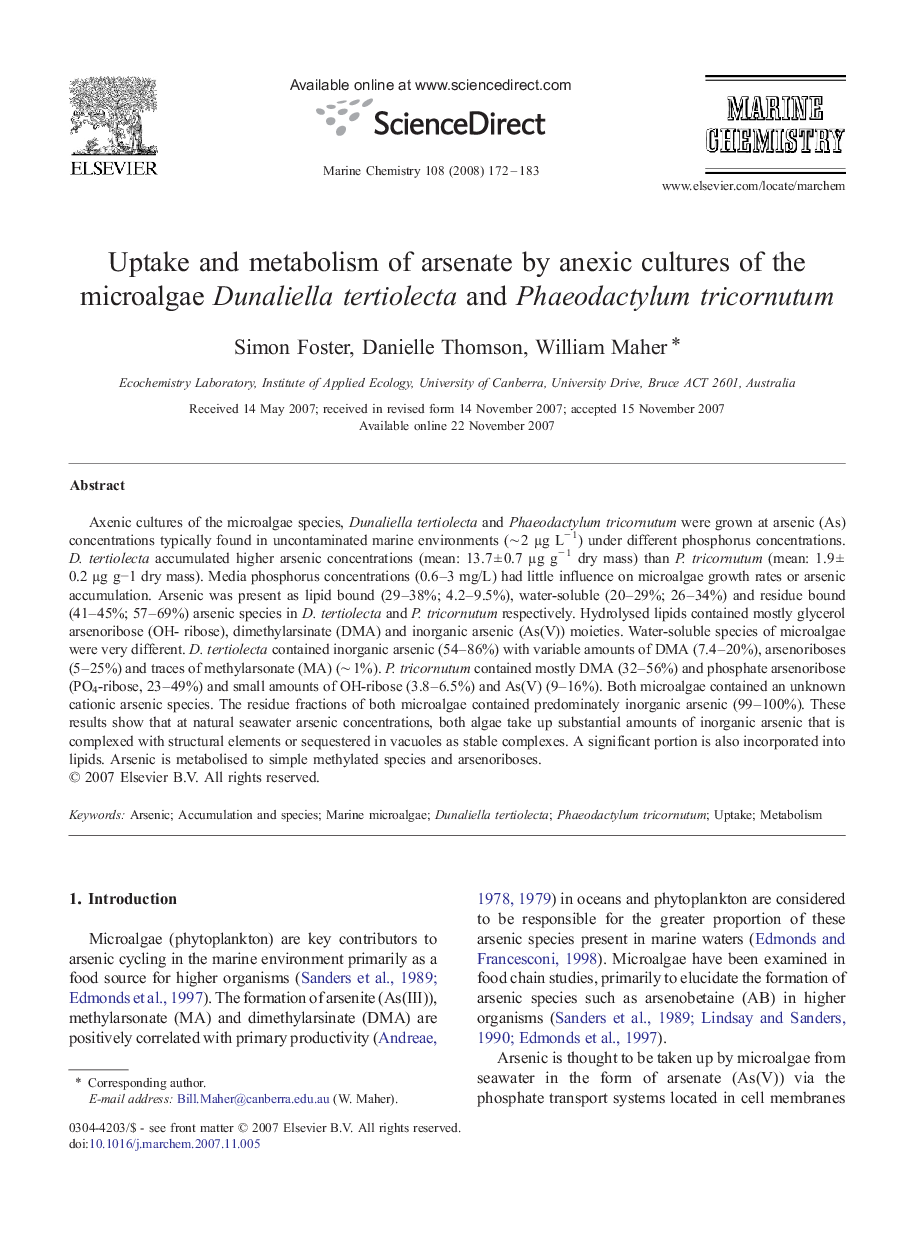| Article ID | Journal | Published Year | Pages | File Type |
|---|---|---|---|---|
| 1263212 | Marine Chemistry | 2008 | 12 Pages |
Axenic cultures of the microalgae species, Dunaliella tertiolecta and Phaeodactylum tricornutum were grown at arsenic (As) concentrations typically found in uncontaminated marine environments (∼ 2 µg L− 1) under different phosphorus concentrations. D. tertiolecta accumulated higher arsenic concentrations (mean: 13.7 ± 0.7 µg g− 1 dry mass) than P. tricornutum (mean: 1.9 ± 0.2 µg g−1 dry mass). Media phosphorus concentrations (0.6–3 mg/L) had little influence on microalgae growth rates or arsenic accumulation. Arsenic was present as lipid bound (29–38%; 4.2–9.5%), water-soluble (20–29%; 26–34%) and residue bound (41–45%; 57–69%) arsenic species in D. tertiolecta and P. tricornutum respectively. Hydrolysed lipids contained mostly glycerol arsenoribose (OH- ribose), dimethylarsinate (DMA) and inorganic arsenic (As(V)) moieties. Water-soluble species of microalgae were very different. D. tertiolecta contained inorganic arsenic (54–86%) with variable amounts of DMA (7.4–20%), arsenoriboses (5–25%) and traces of methylarsonate (MA) (∼ 1%). P. tricornutum contained mostly DMA (32–56%) and phosphate arsenoribose (PO4-ribose, 23–49%) and small amounts of OH-ribose (3.8–6.5%) and As(V) (9–16%). Both microalgae contained an unknown cationic arsenic species. The residue fractions of both microalgae contained predominately inorganic arsenic (99–100%). These results show that at natural seawater arsenic concentrations, both algae take up substantial amounts of inorganic arsenic that is complexed with structural elements or sequestered in vacuoles as stable complexes. A significant portion is also incorporated into lipids. Arsenic is metabolised to simple methylated species and arsenoriboses.
